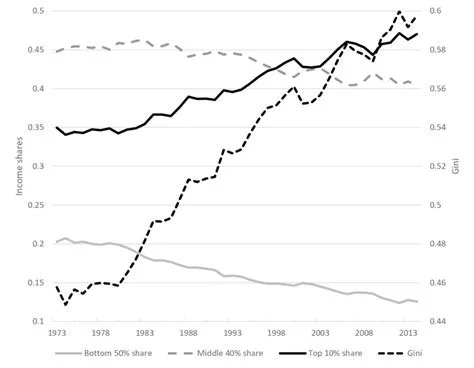The Waves of Suffering: Part I
n.b. Below is Part I of a two-part series. Click here to read Part II.
If forced to describe 2020 in a single word (a nearly impossible task given the events of its first seven months), I would choose “suffering.”
This year has brought indiscriminate, far-reaching suffering and anguish. Whether economic or physical, psychological or emotional, societal or personal, pain has spared no one. Men, women, and children the world over have had heaping doses of salt thrown into open wounds from countless trials and tribulations.
People of all credos and creeds are gritting their teeth and white-knuckling their way through difficult days and long weeks in search of respite.
This pain is macroscopic and microscopic.
It is simultaneously sweeping and particular.
It pervades the largest cities and the smallest homesteads.
It impacts both the aproned grocer and the suited banker.
It wreaks havoc on the kindly grandmother and the starry-eyed student, disrupting the regular mores of life with tempests and gales.
It is raw, unvarnished, and palpable.
It is an unfortunate though incontrovertible truth that life must involve suffering. With the gift of existence comes the realities of suffering, of weeping and gnashing of teeth.
Suffering is a cruel mistress, always close at hand and ready to cast an ashen hue over the most colorful, joyous days. Often she lies just out of sight, lurking around the next bend in the road. However, in 2020, she has reared her ugly head and proven much more conspicuous. Though I hesitate to go as far as Thomas Hobbes, who describes life as “solitary, poor, nasty, brutish, and short,” I find that it has sometimes been difficult to engender hope and happiness amidst the tumult of this year.
Some pundits have wondered if this marks a sort of new normal; if myriad obstacles and impediments will impede flourishing in the years ahead. To wit, the following titles head somber articles: “A troubling pandemic thought: Are THESE the good old days?” Despite these grim inquiries, ample room remains for catharsis and hope. The very same article reads:
If these do turn out to be the good old days, at least there are things for which we legitimately can be thankful: more time and meals together with loved ones; an extended reprieve from soul-sapping commutes; and — for some of us — a greater emotional investment in our children, if only because we’re seeing a lot more of each other.
‘Even now, we can find joy in a day,’ said [Margaret] Hetherman, the futurist. ‘Even if we’re in a hazmat suit, God help us, we’ll have to find what joy we can.’
And indeed, that is the point. To thrive, to move forward, to allow unexpected intrusions of beauty to penetrate our lives despite our garb or circumstance.
To me, suffering rolls and ebbs, moves and undulates like waves. When I reflect on the year that has been, my mind visualizes ferocious waves crashing upon a tiny, weathered, rock-strewn shoreline. Wave after wave of pain and suffering has drenched our individual and collective spirits.
These breakers have come hard, they have come fast, and they have left tremendous destruction in their wake. Bad news and worse events have rolled and pummeled the psyches, livelihoods, and aspirations of individuals the world over. After days, weeks, months of pounding, the shoreline’s rocks seem to stand stout and sturdy. However, with time comes erosion. The unstoppable force of the turgid waves can indeed break the stolidness of any structure, rock or otherwise. And still, dark, foreboding clouds loom on the ominous horizon.
Above: A metaphorical 2020.
These waves of suffering have the ability to knock us down if not dealt with properly. Their bombardment begs the following questions:
How do we stand firm amidst this turmoil?
Is it enough to merely tread water?
Is there any end in sight?
How do we stay afloat despite these waves?
Is it possible to ride them with grace and dignity?
Where do we turn?
What do we do?
Reality provides us with some answers to these cutting questions. By investigating these examples, we can ascertain that in trial and in tribulation, in hurt and in angst, there can be tremendous catharsis. After all, the phoenix can only arise from its ashes after immolation.
Many of the most successful, driven, creative, motivated people have a unique, almost symbiotic relationship with suffering and misfortune. Three tangible anecdotes come to mind from past and present. These include three vastly different individuals: Fr. Edward Sorin, Stephen Colbert, and Amelia Boone.
Fr. Edward Sorin
Founder of the University of Notre Dame, Fr. Edward Sorin plays an outsized role in Notre Dame folklore. His perseverance and mettle following the Great Fire offer instruction on how to move forward in the face of prodigious destruction (emphasis mine):
On the morning of April 23, 1879, the worst fire ever to strike the campus broke out on the roof of the east wing of the six-story main building and burned it to the ground. In those days, the main building contained classrooms, dorm rooms, the dining hall, the library, the laboratory, museum, and administrative offices – essentially the whole campus...
Fr. Sorin, the University founder, returned to campus and walked through the ruins, felt the devastation of the community, and signaled to everyone to enter the church, where he stood on the altar steps and spoke.
“If it were all gone, I should not give up,” he said. “I came here as a young man and dreamed of building a great university in honor of Our Lady. But I built it too small, and she had to burn it to the ground to make the point. So, tomorrow, as soon as the bricks cool, we will rebuild it, bigger and better than ever.”
Later that same day, the students saw Fr. Sorin, then 65 years old, stepping slowly through the ruins of his life’s work, pushing a wheelbarrow full of bricks, getting ready to rebuild.
Without a raging fire engulfing the original main building, we would not have the delight of seeing Mary, Notre Dame, triumphantly shining atop her golden dome. Without the steady perseverance of Fr. Sorin, Notre Dame would pale in comparison to the institution it is today.
Above: From the ashes of the 1879 fire, the proud facade of Notre Dame’s Main Building.
Stephen Colbert
For so overtly goofy and jocular a man, Stephen Colbert has lived through a series of blows that would make even the strongest person weak-kneed. His ruminations on the tragedies that have made up his life are serene and raw. They cuff you in the face like an unexpected blow and startle you from the relative comfort of your existence. His profile in GQ is very much worth reading in full, however, the below excerpt speaks volumes about his embrace of pain and suffering (emphasis mine):
“I was left alone a lot after Dad and the boys died.... And it was just me and Mom for a long time,” he said. “And by her example am I not bitter. By her example. She was not. Broken, yes. Bitter, no.” Maybe, he said, she had to be that for him. He has said this before—that even in those days of unremitting grief, she drew on her faith that the only way to not be swallowed by sorrow, to in fact recognize that our sorrow is inseparable from our joy, is to always understand our suffering, ourselves, in the light of eternity. What is this in the light of eternity? Imagine being a parent so filled with your own pain, and yet still being able to pass that on to your son.
“It was a very healthy reciprocal acceptance of suffering,” he said. “Which does not mean being defeated by suffering. Acceptance is not defeat. Acceptance is just awareness.” He smiled in anticipation of the callback: “‘You gotta learn to love the bomb,’ he said. ‘Boy, did I have a bomb when I was 10. That was quite an explosion. And I learned to love it. So that's why. Maybe, I don't know. That might be why you don't see me as someone angry and working out my demons onstage. It's that I love the thing that I most wish had not happened.”
I love the thing that I most wish had not happened.
I asked him if he could help me understand that better, and he described a letter from Tolkien in response to a priest who had questioned whether Tolkien's mythos was sufficiently doctrinaire, since it treated death not as a punishment for the sin of the fall but as a gift. “Tolkien says, in a letter back: ‘What punishments of God are not gifts?’”
Colbert knocked his knuckles on the table. “‘What punishments of God are not gifts?’” he said again. His eyes were filled with tears. “So it would be ungrateful not to take everything with gratitude. It doesn't mean you want it. I can hold both of those ideas in my head.”
He was 35, he said, before he could really feel the truth of that. He was walking down the street, and it “stopped me dead. I went, ‘Oh, I'm grateful. Oh, I feel terrible.’ I felt so guilty to be grateful. But I knew it was true.”
Throughout his life, Colbert has ingested a heavy dose of amor fati. As Frederich Nietzsche describes it, “My formula for greatness in a human being is amor fati: that one wants nothing to be different, not forward, not backward, not in all eternity. Not merely bear what is necessary, still less conceal it...but love it.” The power that Colbert has gained in life by accepting his fate is so immense that it is difficult to fathom. It is security in the knowledge that everything happens for a purpose, and that it is up to him to make this purpose something positive and active.
Above: A bright umbrella and a brighter disposition.
Amelia Boone
Dubbed the “Queen of Pain” and the “Michael Jordan of Obstacle Course Racing,” Amelia Boone has dominated the grueling world of Tough Mudders and Spartan Races with over fifty podiums and two dozen victories. A corporate attorney at Apple by day and an endurance racer by night, she signed up for her first Tough Mudder race at age 28 when she realized she couldn't do a single pull-up. Since that day, she has gone on to become a four-time world champion and one of the most decorated obstacle racers in history — all while working full-time. A number of quotes stand out from her interview with Shane Parrish:
“I like the quote from Cheryl Strayed’s Brave Enough — ‘Hello, fear. Thank you for being here. You’re my indication that I’m doing what I need to do.’”
“I make friends with pain. We spend so much time trying to avoid pain, yet it’s something that teaches us so many lessons.”
“I’m not the strongest. I’m not the fastest. But I’m really good at suffering.”
Above: The Queen of Pain trekking through her kingdom.
You might say, “Okay, Tom. Inspiring examples, but where does this leave regular old me? I am neither intrepid priest nor acclaimed late-night talk show host. I certainly don’t reign supreme as king or queen of pain. What am I to do?”
These are fair and valid questions.
In my mind, we must meet these waves with a clear courage and with a focused fortitude. When wading through the rough surf of life, with the wind whipping past you and the faint hint of salt on the back of your tongue…








